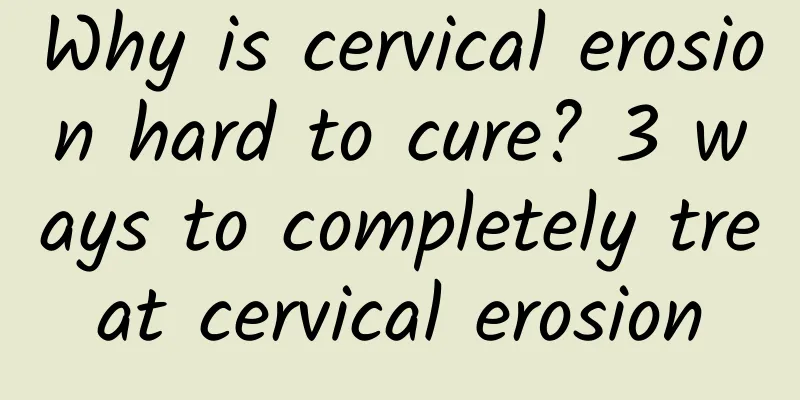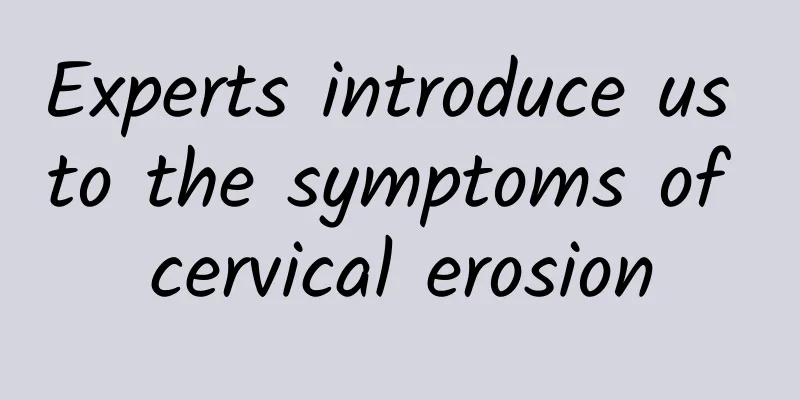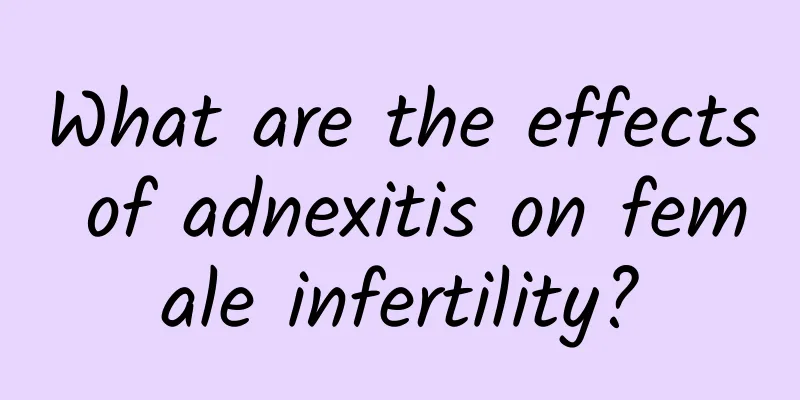Why is cervical erosion hard to cure? 3 ways to completely treat cervical erosion

|
Cervical erosion is now very common. Many women cannot easily cure this disease. The repeated occurrence of cervical erosion has caused great harm to many women's body and mind. So, why is cervical erosion not easy to cure? 1. Why is cervical erosion difficult to heal? During the healing process, the newly formed squamous epithelium is often scattered in flakes or runs in strips on the eroded surface. Because this type of newly formed squamous epithelium grows on tissues with inflammatory changes, it is very easy to fall off. Once stimulated, erosion will reappear. This repeated repair and shedding is the reason why erosion is difficult to heal. The healing process of cervical erosion is generally divided into two forms. One is that the squamous epithelium near the erosion surface grows under the columnar epithelium covering the erosion surface, gradually pushing the columnar epithelium, and finally completely replacing the columnar epithelium to cover the entire erosion surface. This is the form of direct coverage by the squamous epithelium; the other form is indirect replacement. Under normal circumstances, there are relatively few round cells under the columnar epithelium, called reserve cells. These cells have certain proliferation and differentiation capabilities. These reserve cells continue to proliferate and differentiate into squamous epithelial cells, replacing columnar epithelial cells to cover the entire erosion surface, so that the erosion surface is covered with squamous epithelium again and heals. During the healing process, the new squamous epithelium is often scattered in sheets or runs in the erosion surface in strips. Because this type of new squamous epithelium grows on tissues with inflammatory changes, it is very easy to fall off. Once stimulated, erosion reappears. The repeated occurrence of this kind of repair and shedding is the reason why erosion is not easy to heal. 2. Methods for complete treatment of cervical erosion 1. Physical therapy: The principle of physical therapy is to cover the cervical erosion surface with a single layer of columnar epithelium by various physical methods, but regular follow-up is required after treatment. Physical therapy can also cause postoperative bleeding, infertility, cervical stenosis, infection and other problems. 2. Laser treatment: When laser therapy was first used in clinical practice, it was favored by many patients because they thought it would not cause bleeding and was painless. The laser directly acts on the lesion, and the high temperature generated dehydrates, vaporizes, and even carbonizes the diseased tissue and causes it to fall off. 3. Cryotherapy: The principle of this technology is very simple. The probe is inserted into the vagina, directly reaching the cervix, and then liquid nitrogen is released to sharply reduce the temperature of the lesion. The diseased tissue cells are frozen under the effect of low temperature, and then necrosis and shedding occur. The new healthy tissue covers the original lesion, and the disease is cured. |
>>: Can female cervical erosion be cured? What are the best treatments for cervical erosion?
Recommend
What are the causes and symptoms of ovarian cysts?
What are the causes of ovarian cysts and what are...
To eliminate obesity, start by avoiding certain foods! Remember these 6 dietary principles to lose weight naturally
Principle 1: You must eat breakfast and have regu...
What fruit is good to eat after painless abortion? What is the best thing to eat on the first day of painless abortion?
Painless abortion is a common gynecological surge...
Will pelvic effusion and mass be painful?
Pelvic effusion and mass may cause pain, but the ...
How to check all aspects of cervical warts
When we have diseases in our private parts, we wi...
What to do if you have pelvic effusion and cervicitis
Gynecological diseases are a major problem that t...
Can I get pregnant with an ovarian cyst?
Can I get pregnant with an ovarian cyst? Usually,...
Tips to relieve menstrual cramps
Any tips for relieving dysmenorrhea? It is not un...
Sports girls must know! These 10 good habits must be developed
The weather is getting cooler, and although we ha...
What are the nursing principles for adenomyosis?
Adenomyosis can cause certain damage to the ovari...
What is the cause of uterine bleeding
Uterine bleeding, also known as uterine bleeding,...
Treatment for vulvar itching
What are the good ways to treat vulvar itching? V...
What are the dangers of irregular menstruation?
What are the hazards of irregular menstruation? I...
Aerobic exercise + resistance exercise is more effective in reducing fat
[Key Points]: According to the results of a Brazi...
How much does it cost to cure Bartholinitis?
How much does it cost to completely cure Bartholi...









